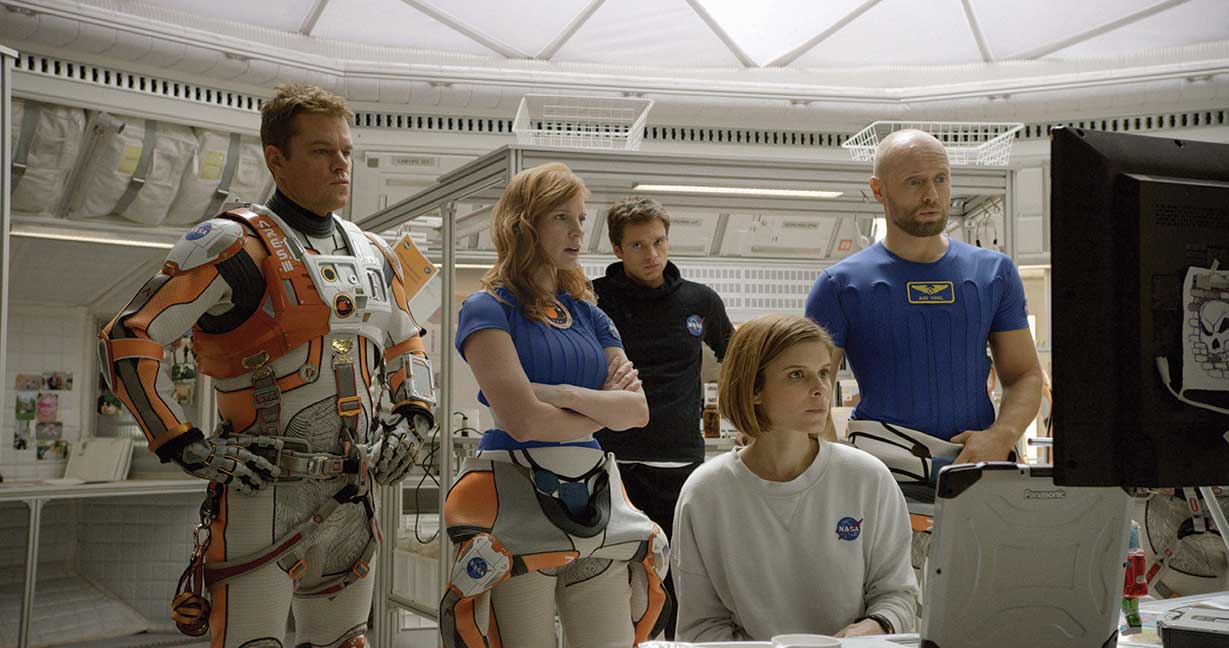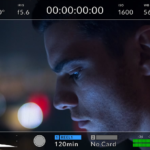
Are You Ready For HDR?
Posted on Apr 19, 2016 by Alex Fice
Stephen Nakamura of Company 3 in LA knows more about HDR than most people but even he admits that this time next year everything could change. He has graded in HDR movies like Exodus: Gods and Kings ( the first ever movie to be HDR graded); The Martian; Tomorrowland (Disney first HDR grade and a movie made for the format) and Joy (you will hardly notice the HDR in this but it is different).
“The HDR world and the colour space and the level of brightness that you can have is pretty extreme. The fact that you can have a 1,000 nit or potentially at some time 4,000 nit monitors doesn’t mean that you have to use all of it. Like any other artform it’s really all about the aethetics, so when I grade my movies for HDR I make sure that I keep the same feel that the cinematographer and the director had intended for the movie. Sometimes that mean we can take advantage of the brightness and the colour space, the fact that that it has more dynamic range for colours and the fact that it can be substantially brighter. All that can allow the cinematographer and director to be more creative with their intent, where they might have been shackled in rec709.
 “When I graded Tomorrowland in HDR, that movie was like a microcosm of what this technology can do. Tomorrowland was a movie that its director Brad Bird said “I want Tomorrowland to look a lot different than what the regular world is.” It’s only when you get to HDR that the pictures can be substantially brighter and more shocking.”
“When I graded Tomorrowland in HDR, that movie was like a microcosm of what this technology can do. Tomorrowland was a movie that its director Brad Bird said “I want Tomorrowland to look a lot different than what the regular world is.” It’s only when you get to HDR that the pictures can be substantially brighter and more shocking.”
“Certainly if someone grades their rec709 and then they make their movies too bright is one thing but that’s where the aesthetics really come in to play for a colourist. Trying to have the movie sit into a much, much brighter colour space, much more contrasty with the whites a lot brighter and the blacks substantially blacker and darker and still trying to make the movie feeling the same even though you are trying to take advantage of the colour space that you have. So that’s the challenge. The movies that I’ve worked on, I don’t think any of the people that saw them thought that they looked overbearing. I think it’s one of those things that people are used to looking at things a certain way, especially for TV with 30 foot-lamberts where with HDR you can have 350 foot-lamberts, with that much light it’s like a shock to people. Again you can take advantage of all of that or you can take advantage of none of that – your movie could look like it would in rec709 if you wanted, it’s really about your choice and how creatively you wanted to shape it in that colourspace. So there’s no mandate from anyone, no look up table rule that you go from rec709 to HDR because it doesn’t really fit that way. I think it’s really early in the ball game and everyone really needs to get a feel of what they’re comfortable with and to keep an open mind about what your project can look like. It definitely allows you more creative freedom, that’s for sure.
“The area that gets affected more than any other is VFX. All of the work that they do in VFX, they need to know if it’s going to HDR. For instance in the bright areas of a shot where they are painting in a sky or a sun or something extremely bright, they might have been at a certain level for P3 or rec709 and that might end up looking like a grey, clipped image if they’re not using the full dynamic range that they need to, to prepare themselves for HDR. So I think that affects them the most as far as what we do, the DI grading suites, we can basically take any image and shape it the way we want, so as long as the image, film or digital, if it looks good in P3 typically we can make it look good in HDR. The only thing that can affect that is if the VFX that comes in and they didn’t prepare it for HDR that sometimes the highlights can look a little clipped or compressed. We can help them with that, it’s a kind of fix that we have to do.
“My advice to cinematophers is to shoot the way you normally do but be very careful about underexposing or overexposing as normal but because what happens is you always have to keep in mind the technology allows you to see images that are ten times as bright as you have ever seen them before. It’s kind of like if you look at someone in candlelight with not a lot of light, they look a certain way and all of a sudden you put a spotlight on them, right in front of their face you see every crevice, every blemish and every wrinkle. It’s the same kind of concept with HDR, when you have an image and you pump ten times as much light in to that image then things like noise and grain and any type of visual artefact will get enhanced substantially! So not only is the light level substantially brighter where all the inherent flaws of the image will show up – a lot of these new HDR screens are pretty large and the size of these screens alone will cause more problems. The fact that images are sharper, there’s a larger colour space, the brightness leve is a lot greater. Your picture needs to be prepared for that type of image. So if you want your movie to look pristine and clean you need to be very careful.
“Maybe this becomes an issue or something to think about whether you shoot film or not. Film inherently has grain, digital cameras like Alexa, Sony’s F65, those types of cameras are pretty noiseless. So if you want to future proof your product you definitely need to keep those things in mind when in the past you didn’t need to, now you really need to. It puts the onus on everyone from the production to stage to the post production stage to makesure they’re much more careful and diligent about the image they’re producing.
“HDR isn’t right for everything, the consumer will drive where the business goes, if the consumer doesn’t want HDR it will fail. If the consumer wants the brighter, contrasty pictures then that’s what they’ll get and everyone will have to adapt to it. The studios are content providers here.
 ‘The Martian’ – “When we get to the dark scenes we were able to make the blacks even darker in HDR and you can still see the faces, like in the big sandstorm night sequence – you can drive your blacks a lot darker. Also when they’re inside of the hub there are occasions where Ridley Scott would want highlights that were a lot brighter, that helped the narrative.”
‘The Martian’ – “When we get to the dark scenes we were able to make the blacks even darker in HDR and you can still see the faces, like in the big sandstorm night sequence – you can drive your blacks a lot darker. Also when they’re inside of the hub there are occasions where Ridley Scott would want highlights that were a lot brighter, that helped the narrative.”
“The past few movies I’ve done on the Sony X300 monitor which is a professional monitor – which is becoming the norm for our industry, a really great monitor. But we’re right at the beginning of things now, the first innings of a baseball game if you like. A lot of things that we know today are going to change tommorrow, we are constantly working with the studios and the electronics’ manufacturers to try and sort all of this out. The consumer world is extremely confusing to say the least. I work with really high profile directors and cinematographers and every single one of the film makers that I workwith ask which TV they should buy! I can tell even working with all the manufacturers I have no clue. It is so confusing and the technology is changing every single day. Then you have services like Netflix who are encouraging their producers to flip the content in to HDR, it’s oneupmanship really.
“If you’re a cinematographer and you’re shooting a drama, very realistic looking, imitating real life sort of, the HDR thing is really irrelevant to you. You’re going to have a palette that’s consistent throughout the movie so whether you have that in P3, rec709 or HDR there’s a palette that needs to be consistent all the way through. It’s movie like Tomorrowland where cinematographers think they can be more creative, where you have a palette of normal for ‘normal life’ then you go into another world and you want this other world to be like much brighter and the colour much more vibrant than you could ever have in P3 or rec709. You could certainly craft something like that and be very creative, it really depends on the content as a cinematographer. You could be really cool and cut a scene that isn’t just a little bit brighter but tremendously brighter, so bright that it shocks the audience, something like that. What every that can be to grab people’s attention, you certainly can do that with this format. It’ll just add to the tool box of the cinematographer, just keep HDR in mind.
“It shouldn’t hurt you in any way, we the colourists we can make that picture look anyway we want it to, we can make it look exactly like rec709 or P3 if they wanted. They can look at the HDR monitor with 1,000 nits and it’ll look exactly like rec709 if they want it to. So they shouldn’t be afraid of that, what they should be excited about hopefully is to say ‘Hey you know what if the technology is going to go forward and people embrace this technology then I want my movie to look as best as it can’. I don’t think The Martian, Joy, Tomorrowland, any of those movies look worse in HDR! HDR gives you a larger canvas to paint on and gives you imagination to create something different. It could look the same or maybe just one scene could look different, you could increase the highlights or make it a little bit darker, not only can it be brighter but your dark scenes can be really, really black, you could still have a lot of detail in there but it will be darker and blacker. You could create a different type of mood for your night scenes if you want. You look at the movie or production dailies on a rec709 monitor, you’ve done your video pass on a rec709 monitor at 30 foot-lamberts, now you have something with 350-foot lamberts with deep, deep blacks. What could your movie look like? Lets boost the highlights on this shot or lets make the darks blacker on this scene, those are the kind of things that if you’re trying to convey a certain type of thing to the audience you could really get a lot more creative with it. Conveying even more emotion through the colour in HDR.
“For instance when I graded Tomorrowland in HDR, that movie was like a microcosm of what this technology can do. Tomorrowland was a movie that its director Brad Bird said “I want Tomorrowland to look a lot different than what the regular world is.” In P3 we can’t do much because your regular production footage is really using the full dynamic range already, your skies have a certain value, sunlight has a certain type of value, skin tones fall in to a certain tonal range in P3 or rec709 and once you get to Tomorrowland and there’s a kind of flash you’re still stuck with 14 foot-lambert P3 and 30 foot-lambert rec709. It’s only when you get to HDR that the pictures can be substantially brighter and more shocking.
“Then there’s The Martian, that movie basically is you existing in a certain world but when we get to the dark scenes we made the blacks even darker and you can still see the faces like in the big sandstorm night sequence – you can drive your blacks a lot darker so you can have this night feel, still seeing the faces even though the storm is happening at night. So the HDR version is much darker than the rec709 version. Also when they’re inside of the hub there are occasions where Ridley Scott would want highlights that were a lot brighter, yunno the power’s going down and the lights are flashing which gets the audience understanding that there’s something going wrong. Then there’s Joy which is like a straight drama so the transfer doesn’t have anything that is really any different, there’s a consistency we have through the movie, there’s nothing that is a lot darker or brighter. It looks different as HDR as you’ve got 350 foot-lamberts and all that contrast, but it feels like rec709. There are three movies where you can use it or not, it’s your choice.
“But colourists are going to have to sort this out for themselves and find out what really looks good in HDR and keeping their movies looking the same, feeling the same and I think that takes a little bit of trial and error because the technology is so different and the picture can look so different that you want to maximise what the technology can do for you but you still don’t want to be afraid of what it can do for you. If you get too afraid then your picture will look exactly like your rec709 and if you get too bold it doesn’t look like the movie anymore.
“I get a lot of DPs wanting to talk to me about HDR. When somebody comes in to this technology for the first time you need some guidance. Having worked with some of the electronics manufacturers and fed back to them, I can provide this guidance to other colourists and DPs. Very few people know what to look our for, it’s that early in the process. The most basic thing that I can say to cinematographers is always think about the amount of noise that you want to have on your final product. If you want your movie or your project to have film grain, and that’s part of the look that you want then you can make a choice and shoot film, if you want the thing to look really pristine this is now a serious consideration going in to the HDR world. Film is a fantastic capture medium but film has grain, digital cameras are practically noiseless if shot right. In the HDR world that is going to matter, it’s going to look different. You never had to deal with this in P3 or rec709, this is something you are going to have to think about. HDR will expose your picture for every flaw that you have. HDR accentuates film grain massively.”











